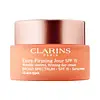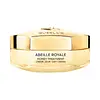What's inside
What's inside
 Key Ingredients
Key Ingredients

 Benefits
Benefits

 Concerns
Concerns

 Ingredients Side-by-side
Ingredients Side-by-side

Water
Skin ConditioningHomosalate
Skin ConditioningOctocrylene
UV AbsorberGlycerin
HumectantButyloctyl Salicylate
Skin ConditioningButyrospermum Parkii Butter
Skin ConditioningDimethicone
EmollientButyl Methoxydibenzoylmethane
UV AbsorberC12-15 Alkyl Benzoate
AntimicrobialCetearyl Alcohol
EmollientMethyl Methacrylate Crosspolymer
Potassium Cetyl Phosphate
EmulsifyingParfum
MaskingCetearyl Glucoside
EmulsifyingDimethicone/Vinyl Dimethicone Crosspolymer
Skin ConditioningPhenoxyethanol
PreservativeButylene Glycol
HumectantAcrylates/C10-30 Alkyl Acrylate Crosspolymer
Emulsion StabilisingCaprylyl Glycol
EmollientTromethamine
BufferingAvena Sativa Kernel Extract
AbrasiveDisodium EDTA
Tocopheryl Acetate
AntioxidantXanthan Gum
EmulsifyingDimethiconol
EmollientTocopherol
AntioxidantAnigozanthos Flavidus Extract
Skin ConditioningCaprylic/Capric Triglyceride
MaskingBetaine
HumectantSilica
AbrasiveSorbitol
HumectantDiospyros Mespiliformis Leaf Extract
Skin ConditioningMaltodextrin
AbsorbentSanicula Europaea Extract
Skin ConditioningSodium Benzoate
MaskingKalanchoe Pinnata Leaf Extract
MaskingBalanites Roxburghii Seed Oil
Skin ConditioningMitracarpus Scaber Extract
Skin ConditioningCitric Acid
BufferingMalpighia Emarginata Seed Extract
Skin ConditioningLapsana Communis Flower/Leaf/Stem Extract
Skin ConditioningFurcellaria Lumbricalis Extract
Skin ConditioningCI 15985
Cosmetic ColorantPotassium Sorbate
PreservativeMaris Sal
Skin ConditioningWater, Homosalate, Octocrylene, Glycerin, Butyloctyl Salicylate, Butyrospermum Parkii Butter, Dimethicone, Butyl Methoxydibenzoylmethane, C12-15 Alkyl Benzoate, Cetearyl Alcohol, Methyl Methacrylate Crosspolymer, Potassium Cetyl Phosphate, Parfum, Cetearyl Glucoside, Dimethicone/Vinyl Dimethicone Crosspolymer, Phenoxyethanol, Butylene Glycol, Acrylates/C10-30 Alkyl Acrylate Crosspolymer, Caprylyl Glycol, Tromethamine, Avena Sativa Kernel Extract, Disodium EDTA, Tocopheryl Acetate, Xanthan Gum, Dimethiconol, Tocopherol, Anigozanthos Flavidus Extract, Caprylic/Capric Triglyceride, Betaine, Silica, Sorbitol, Diospyros Mespiliformis Leaf Extract, Maltodextrin, Sanicula Europaea Extract, Sodium Benzoate, Kalanchoe Pinnata Leaf Extract, Balanites Roxburghii Seed Oil, Mitracarpus Scaber Extract, Citric Acid, Malpighia Emarginata Seed Extract, Lapsana Communis Flower/Leaf/Stem Extract, Furcellaria Lumbricalis Extract, CI 15985, Potassium Sorbate, Maris Sal
Water
Skin ConditioningGlycerin
HumectantC15-19 Alkane
SolventSqualane
EmollientPropanediol
SolventJojoba Esters
EmollientGlyceryl Stearate
EmollientPEG-100 Stearate
Polyglycerin-3
HumectantC12-15 Alkyl Benzoate
AntimicrobialCellulose
AbsorbentCoco-Caprylate/Caprate
EmollientRoyal Jelly
Caprylyl Glycol
EmollientCetyl Alcohol
EmollientStearyl Alcohol
EmollientSteareth-21
CleansingAmmonium Acryloyldimethyltaurate/Vp Copolymer
Parfum
MaskingTribehenin
EmollientButyrospermum Parkii Butter
Skin ConditioningDimethicone
EmollientPhytosteryl/Octyldodecyl Lauroyl Glutamate
Skin ConditioningChlorphenesin
AntimicrobialMel
EmollientAcrylates/C10-30 Alkyl Acrylate Crosspolymer
Emulsion StabilisingTocopheryl Acetate
AntioxidantSodium Hyaluronate
HumectantXanthan Gum
EmulsifyingCeramide Ng
Skin ConditioningPEG-10 Phytosterol
EmulsifyingHydrogenated Olive Oil Unsaponifiables
EmollientSodium Hydroxide
BufferingLactic Acid
BufferingCI 77492
Cosmetic ColorantTocopherol
AntioxidantPalmitoyl Hexapeptide-12
Skin ConditioningGlycine Soja Oil
EmollientSilica
AbrasiveWater, Glycerin, C15-19 Alkane, Squalane, Propanediol, Jojoba Esters, Glyceryl Stearate, PEG-100 Stearate, Polyglycerin-3, C12-15 Alkyl Benzoate, Cellulose, Coco-Caprylate/Caprate, Royal Jelly, Caprylyl Glycol, Cetyl Alcohol, Stearyl Alcohol, Steareth-21, Ammonium Acryloyldimethyltaurate/Vp Copolymer, Parfum, Tribehenin, Butyrospermum Parkii Butter, Dimethicone, Phytosteryl/Octyldodecyl Lauroyl Glutamate, Chlorphenesin, Mel, Acrylates/C10-30 Alkyl Acrylate Crosspolymer, Tocopheryl Acetate, Sodium Hyaluronate, Xanthan Gum, Ceramide Ng, PEG-10 Phytosterol, Hydrogenated Olive Oil Unsaponifiables, Sodium Hydroxide, Lactic Acid, CI 77492, Tocopherol, Palmitoyl Hexapeptide-12, Glycine Soja Oil, Silica
Ingredients Explained
These ingredients are found in both products.
Ingredients higher up in an ingredient list are typically present in a larger amount.
Acrylates/C10-30 Alkyl Acrylate Crosspolymer is a synthetic polymer. It is used to thicken and improve the texture of products. Due to its properties, it can prevent water and oil ingredients from separating.
This ingredient is also known as shea butter. It is an effective skin hydrator and emollient.
Emollients help soothe and soften your skin. It does this by creating a protective film on your skin. This barrier helps trap moisture and keeps your skin hydrated. Emollients may be effective at treating dry or itchy skin.
Shea butter is rich in antioxidants. Antioxidants help fight free-radicals, or molecules that may harm the body. It is also full of fatty acids including stearic acid and linoleic acid. These acids help replenish the skin and keep skin moisturized.
While Shea Butter has an SPF rating of about 3-4, it is not a sunscreen replacement.
Shea butter may not be fungal acne safe. We recommend speaking with a professional if you have any concerns.
Learn more about Butyrospermum Parkii ButterC12-15 Alkyl Benzoate is made up of Benzoic Acid and long chain alcohols. It has a low molecular weight.
C12-15 Alkyl Benzoate is an emollient and texture enhancer. Due to its solubility, it is often used in sunscreens to help evenly distribute active ingredients.
As an emollient, C12-15 Alkyl Benzoate helps soften and hydrate your skin. Emollients create a film on your skin that traps moisture within.
This ingredient has been reported to cause eye irritation.
Learn more about C12-15 Alkyl BenzoateCaprylyl Glycol is a humectant and emollient, meaning it attracts and preserves moisture.
It is a common ingredient in many products, especially those designed to hydrate skin. The primary benefits are retaining moisture, skin softening, and promoting a healthy skin barrier.
Though Caprylyl Glycol is an alcohol derived from fatty acids, it is not the kind that can dry out skin.
This ingredient is also used as a preservative to extend the life of products. It has slight antimicrobial properties.
Learn more about Caprylyl GlycolDimethicone is a type of synthetic silicone created from natural materials such as quartz.
What it does:
Dimethicone comes in different viscosities:
Depending on the viscosity, dimethicone has different properties.
Ingredients lists don't always show which type is used, so we recommend reaching out to the brand if you have questions about the viscosity.
This ingredient is unlikely to cause irritation because it does not get absorbed into skin. However, people with silicone allergies should be careful about using this ingredient.
Note: Dimethicone may contribute to pilling. This is because it is not oil or water soluble, so pilling may occur when layered with products. When mixed with heavy oils in a formula, the outcome is also quite greasy.
Learn more about DimethiconeGlycerin is already naturally found in your skin. It helps moisturize and protect your skin.
A study from 2016 found glycerin to be more effective as a humectant than AHAs and hyaluronic acid.
As a humectant, it helps the skin stay hydrated by pulling moisture to your skin. The low molecular weight of glycerin allows it to pull moisture into the deeper layers of your skin.
Hydrated skin improves your skin barrier; Your skin barrier helps protect against irritants and bacteria.
Glycerin has also been found to have antimicrobial and antiviral properties. Due to these properties, glycerin is often used in wound and burn treatments.
In cosmetics, glycerin is usually derived from plants such as soybean or palm. However, it can also be sourced from animals, such as tallow or animal fat.
This ingredient is organic, colorless, odorless, and non-toxic.
Glycerin is the name for this ingredient in American English. British English uses Glycerol/Glycerine.
Learn more about GlycerinParfum is a catch-all term for an ingredient or more that is used to give a scent to products.
Also called "fragrance", this ingredient can be a blend of hundreds of chemicals or plant oils. This means every product with "fragrance" or "parfum" in the ingredients list is a different mixture.
For instance, Habanolide is a proprietary trade name for a specific aroma chemical. When used as a fragrance ingredient in cosmetics, most aroma chemicals fall under the broad labeling category of “FRAGRANCE” or “PARFUM” according to EU and US regulations.
The term 'parfum' or 'fragrance' is not regulated in many countries. In many cases, it is up to the brand to define this term.
For instance, many brands choose to label themselves as "fragrance-free" because they are not using synthetic fragrances. However, their products may still contain ingredients such as essential oils that are considered a fragrance by INCI standards.
One example is Calendula flower extract. Calendula is an essential oil that still imparts a scent or 'fragrance'.
Depending on the blend, the ingredients in the mixture can cause allergies and sensitivities on the skin. Some ingredients that are known EU allergens include linalool and citronellol.
Parfum can also be used to mask or cover an unpleasant scent.
The bottom line is: not all fragrances/parfum/ingredients are created equally. If you are worried about fragrances, we recommend taking a closer look at an ingredient. And of course, we always recommend speaking with a professional.
Learn more about ParfumSilica, also known as silicon dioxide, is a naturally occurring mineral. It is used as a fine, spherical, and porous powder in cosmetics.
Though it has exfoliant properties, the function of silica varies depending on the product.
The unique structure of silica enhances the spreadability and adds smoothness, making it a great texture enhancer.
It is also used as an active carrier, emulsifier, and mattifier due to its ability to absorb excess oil.
In some products, tiny microneedles called spicules are made from silica or hydrolyzed sponge. When you rub them in, they lightly polish away dead skin layers and enhance the penetration of active ingredients.
Learn more about SilicaTocopherol (also known as Vitamin E) is a common antioxidant used to help protect the skin from free-radicals and strengthen the skin barrier. It's also fat soluble - this means our skin is great at absorbing it.
Vitamin E also helps keep your natural skin lipids healthy. Your lipid skin barrier naturally consists of lipids, ceramides, and fatty acids. Vitamin E offers extra protection for your skin’s lipid barrier, keeping your skin healthy and nourished.
Another benefit is a bit of UV protection. Vitamin E helps reduce the damage caused by UVB rays. (It should not replace your sunscreen). Combining it with Vitamin C can decrease sunburned cells and hyperpigmentation after UV exposure.
You might have noticed Vitamin E + C often paired together. This is because it is great at stabilizing Vitamin C. Using the two together helps increase the effectiveness of both ingredients.
There are often claims that Vitamin E can reduce/prevent scarring, but these claims haven't been confirmed by scientific research.
Learn more about TocopherolTocopheryl Acetate is AKA Vitamin E. It is an antioxidant and protects your skin from free radicals. Free radicals damage the skin by breaking down collagen.
One study found using Tocopheryl Acetate with Vitamin C decreased the number of sunburned cells.
Tocopheryl Acetate is commonly found in both skincare and dietary supplements.
Learn more about Tocopheryl AcetateWater. It's the most common cosmetic ingredient of all. You'll usually see it at the top of ingredient lists, meaning that it makes up the largest part of the product.
So why is it so popular? Water most often acts as a solvent - this means that it helps dissolve other ingredients into the formulation.
You'll also recognize water as that liquid we all need to stay alive. If you see this, drink a glass of water. Stay hydrated!
Learn more about WaterXanthan gum is used as a stabilizer and thickener within cosmetic products. It helps give products a sticky, thick feeling - preventing them from being too runny.
On the technical side of things, xanthan gum is a polysaccharide - a combination consisting of multiple sugar molecules bonded together.
Xanthan gum is a pretty common and great ingredient. It is a natural, non-toxic, non-irritating ingredient that is also commonly used in food products.
Learn more about Xanthan Gum